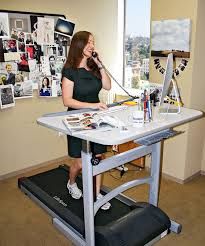In previous posts I have talked generally about the Side-Plate Diet and the business of which side plate to use (size matters) and how many – I am currently on 3 a day but once or twice a week add another (albeit with an apple and a small handful of nuts on it, so still nice and healthy).
So now for the nitty-gritty of what to actually put on the side-plates during the day so that you are optimally healthy but losing weight.
The beauty of this diet is that you are essentially eating perfectly normal food, you are just constraining the amount by imposing strict portion control. Get your 3 (or 4) plates out first thing in the morning and take pictures of each meal as you go along. Remember, there is evidence to show that by keeping a diary of your food intake, you will increase the likelihood of weight loss. The best way I have found is taking snaps on my phone. If you have got a diet-buddy, send them to him or her, or indeed send them to me.
Let’s start with breakfast: Once you begin the Side-Plate Diet, you will definitely be nice and hungry by the time breakfast comes around. The question of whether breakfast is the most important meal of the day now appears to be moot (have a read of this information from the NHS: http://www.nhs.uk/news/2014/08august/pages/breakfast-not%20the-most-important-meal-of-the-day.aspx ) but I LOVE breakfast, so here are half a dozen suggestions for brekkies which fit nicely on a side-plate and should keep you going until lunch.
1. Half a bagel with low-fat cream cheese and smoked salmon. This is probably more of a once-a-week treat, or brunch out with friends.
2. One poached egg on a bed of spinach
3.My go-to, quick and easy breakfast choice: Bircher Muesli or normal healthy cereal http://www.theguardian.com/lifeandstyle/wordofmouth/2014/oct/23/how-to-make-perfect-bircher-muesli-recipe with honey, berries and seeds or nuts on top. Use a dipping bowl or small teacup for this. I recommend using oats (in my case I am extremely lucky to be a coeliac who can tolerate gluten free oats) as they contain slow release energy. These pictures below show the layers of food I put in my dipping bowl which, by the way, is 4.25 inches across at the top. Almond-milk soaked oats + pomegranate seeds + raspberries + blueberries + topped with flaked almonds.
4. One slice of wholemeal toast with enough baked beans to cover. (Don’t overload)
5. Low fat Greek Yoghurt (which has twice as much protein as regular yoghurt) topped with berries, a few toasted almonds and some seeds.
6. One slice of wholemeal toast with peanut butter or jam or honey on.
You can see in that photo that I have the plates out ready for the day ahead. I think I can see four. By the way, I very rarely drink juice or smoothies, but if you do want to, on the Side-Plate Diet, make sure it is in a small glass (see below). Even something as healthy as a freshly made fruit or vegetable juice smoothie needs to have portion control imposed on it.
The thing to remember though is this: whatever you normally have for breakfast, as long as it isn’t a Mars Bar, or a bowl of Ben and Jerry’s, if you put it onto a side-plate or into a dipping bowl, you are most likely cutting down on your calorie intake. You will lose weight on this diet if you stick to this imposed portion control. However, nobody wants to feel faint or weak from lack of food, so you may need to adjust the number of side-plates you use. There are lots of variables: your metabolism, the amount of exercise you take and your age being the three most obvious. I definitely don’t need the amount of food I used to eat in my 30s and 40s. It has taken me a while to accept that, but there we are.
Also, don’t eat between the side-plate meals under any circumstances. Not so much as one grape!
This diet works!
Good luck and watch out for some lunch ideas coming soon.
Annie Bee x
More pics of healthy breakfast ideas here: https://uk.pinterest.com/buzzanniebee/healthy-breakfasts/

















